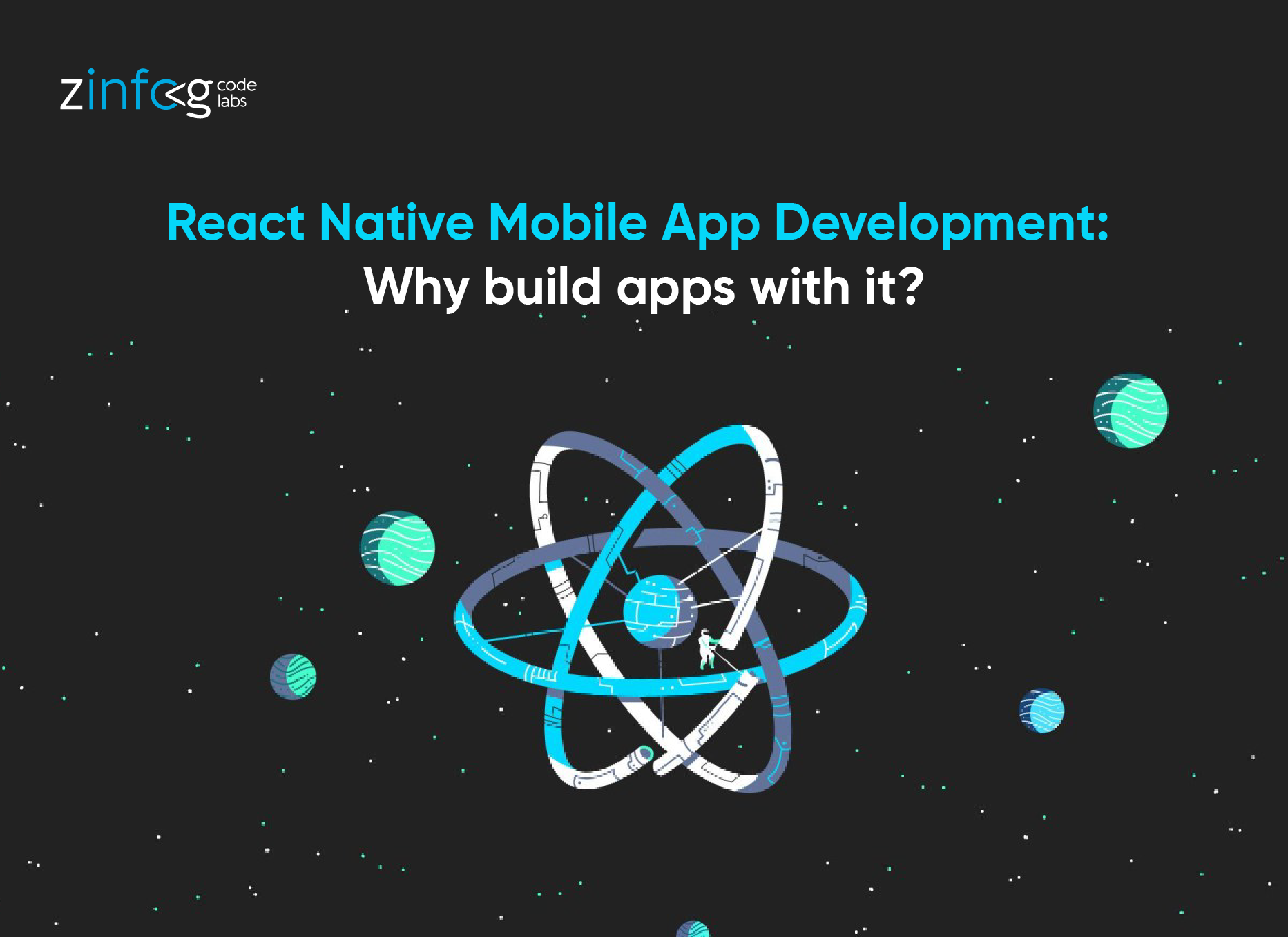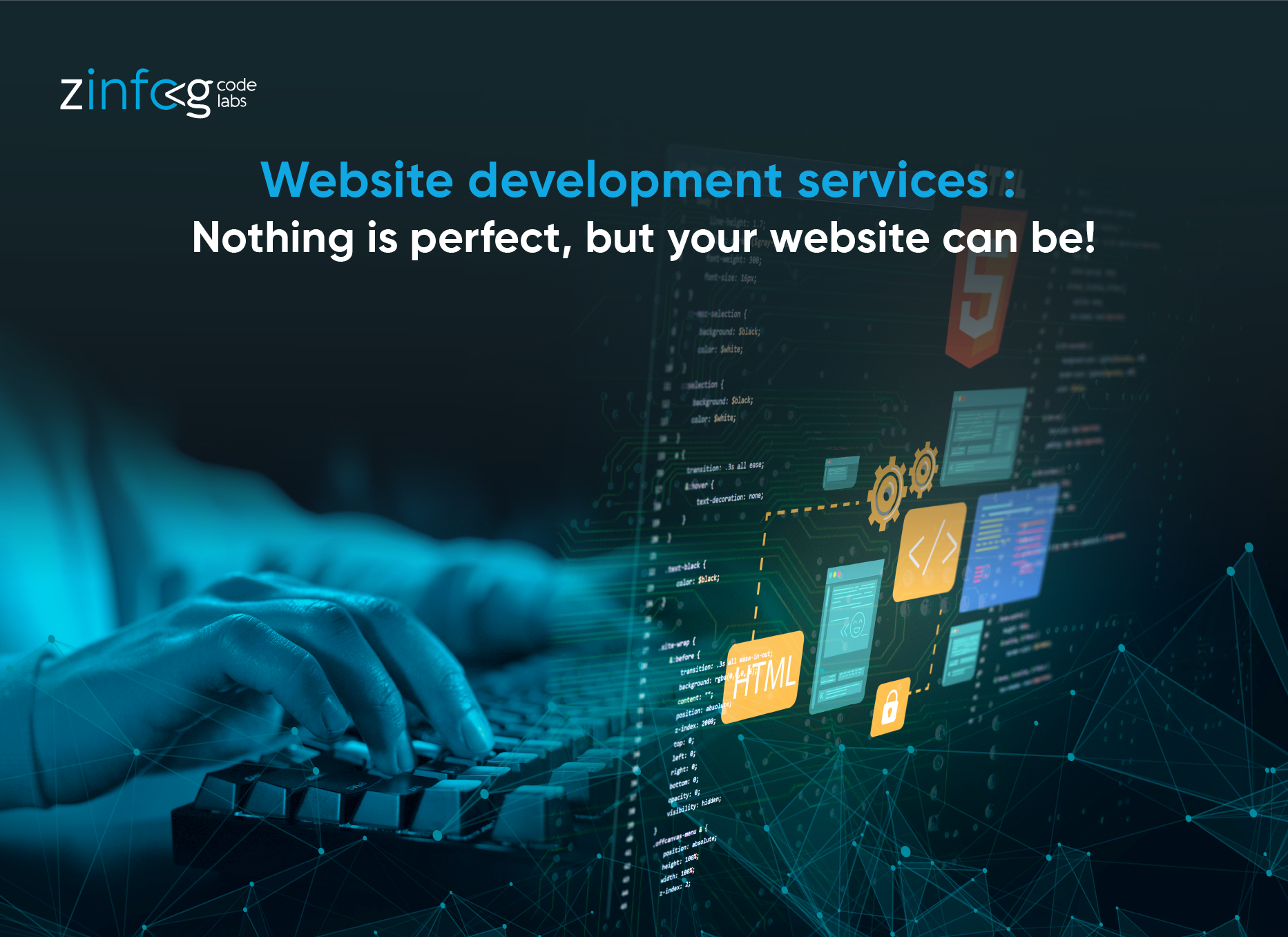Case study: Discover the 10 essential qualities to look for in a web development company. From expertise and technical proficiency to customization and affordability, find your perfect partner in web development.

SameerRoshan
May 16,2023

Top Mobile App Development Company
In today's digital age, mobile apps have become an integral part of our lives. They enable us to connect, communicate, shop, and accomplish various tasks with just a few taps on our smartphones. Behind the scenes, top mobile app development companies continuously innovate and adapt to meet the ever-growing demands of users and businesses alike. In this blog, we will explore the emerging trends in top mobile app development companies that are shaping the future of mobile apps.

I. Rise of Cross-Platform App Development
1. The need for cross-platform compatibility
In today's mobile landscape, users access apps on various devices and platforms, including smartphones, tablets, and different operating systems like iOS and Android. This diversity poses a challenge for businesses and app developers to create separate apps for each platform, leading to increased development time, effort, and costs. Cross-platform app development addresses this challenge by allowing the creation of apps that can run seamlessly across multiple platforms.
2. Introduction to hybrid and cross-platform frameworks
Hybrid and cross-platform frameworks have emerged as powerful tools for cross-platform app development. These frameworks, such as React Native, Xamarin, and Flutter, enable developers to write code once and deploy it on multiple platforms. They leverage web technologies like HTML, CSS, and JavaScript to build apps that have a native-like performance and user experience across different platforms.
3. Benefits of cross-platform app development for businesses
a) Cost-effectiveness: Developing a single codebase for multiple platforms significantly reduces development costs compared to building separate native apps.
b) Faster time to market: Cross-platform development allows simultaneous development and deployment, resulting in faster app delivery and reduced time to market.
c) Code reusability: With shared codebases, developers can reuse a significant portion of the code across platforms, saving time and effort in development and maintenance.
d) Wider audience reach: Cross-platform apps cater to a larger audience by being available on multiple platforms, maximizing user engagement and potential market penetration.

By leveraging the power of cross-platform app development, businesses can optimize their resources, accelerate app development cycles, and reach a wider audience, all while maintaining a high-quality user experience.
 II. Integration of Artificial Intelligence (AI) and Machine Learning (ML)
II. Integration of Artificial Intelligence (AI) and Machine Learning (ML)
1. Enhancing user experience through AI-powered features
AI-powered features in mobile apps have revolutionized the user experience by providing personalized and intelligent interactions. These features include:
a) Intelligent recommendations: AI algorithms analyze user data and behavior patterns to provide personalized recommendations, whether it's suggesting relevant products, movies, or articles.
b) Voice recognition and natural language processing: AI enables voice commands and speech-to-text capabilities, allowing users to interact with apps using their voice.
c) Image and video recognition: AI algorithms can recognize and analyze images and videos, enabling features like automatic tagging, object recognition, and augmented reality filters.
d) Context-aware computing: AI algorithms can adapt to the user's context, such as location, time, and preferences, to deliver personalized content and recommendations.
By incorporating AI-powered features, top mobile app development companies enhance user engagement and satisfaction, ultimately leading to increased app usage and loyalty.
2. Personalization and predictive analytics
AI and ML technologies enable mobile apps to gather and analyze vast amounts of user data, which can be used for personalization and predictive analytics. Benefits include:
a) Personalized content delivery: Mobile apps can leverage AI algorithms to deliver tailored content based on user preferences, behaviors, and past interactions, creating a more personalized user experience.
b) Predictive analytics: By analyzing user data, ML algorithms can predict user behavior, preferences, and future needs. This allows apps to proactively offer relevant suggestions and recommendations, enhancing user engagement.
c) Dynamic pricing and offers: ML algorithms can analyze market trends, user behavior, and competitors' pricing to optimize pricing strategies and offer personalized discounts or promotions to individual users.
With personalization and predictive analytics, top mobile app development companies can create apps that adapt to each user's unique preferences and deliver a more tailored experience.

3. Chatbots and virtual assistants
Chatbots and virtual assistants have become increasingly popular in mobile apps, providing instant and efficient customer support, information retrieval, and task automation. Benefits include:
a) 24/7 customer support: AI-powered chatbots can handle customer queries, provide product information, and assist with common tasks, reducing the need for human intervention and enabling round-the-clock support.
b) Natural language processing: ML algorithms enable chatbots to understand and respond to user queries in a conversational manner, providing a more intuitive and human-like interaction.
c) Task automation: Virtual assistants can automate routine tasks such as setting reminders, scheduling appointments, and making reservations, saving users time and effort.
Top mobile app development companies integrate chatbots and virtual assistants to streamline user interactions, enhance customer support, and improve overall app usability.
4. How top mobile app development companies leverage AI and ML technologies:
Leading mobile app development companies leverage AI and ML technologies in various ways, including:
a) Data analysis and insights: AI algorithms are used to analyze user data, generate valuable insights, and identify patterns and trends that can inform decision-making and app optimization.
b) Machine learning models: Development companies train ML models on large datasets to create intelligent systems that can make predictions, classify data, and improve over time.
Natural language processing frameworks: Companies utilize NLP frameworks to enable voice commands, speech recognition, and sentiment analysis, enhancing user interactions.
c) Pre-built AI services: Developers leverage pre-built AI services from platforms like Google Cloud, Amazon AWS, or Microsoft Azure to incorporate advanced AI capabilities quickly.
By harnessing the power of AI and ML, top mobile app development companies create apps that are more intelligent, intuitive, and tailored to meet the evolving needs and expectations of users.
III. Internet of Things (IoT) Integration
1. The growth of IoT and its impact on mobile apps:
The Internet of Things (IoT) refers to the network of physical devices, vehicles, appliances, and other objects embedded with sensors, software, and connectivity, enabling them to collect and exchange data. IoT has witnessed significant growth in recent years, and its impact on mobile apps has been profound. By integrating IoT capabilities into mobile apps, users can control and monitor smart devices, access real-time data, and automate tasks, enhancing convenience and efficiency.
2. Benefits of IoT integration in mobile apps:
a) Enhanced control and automation: Mobile apps integrated with IoT enable users to remotely control and automate devices such as thermostats, security systems, and home appliances, providing convenience and energy efficiency.
b) Real-time data access: IoT integration allows mobile apps to gather and present real-time data from connected devices, enabling users to monitor and analyze information for informed decision-making.
c) Improved efficiency and productivity: IoT-enabled mobile apps streamline processes by automating tasks, optimizing resource usage, and enabling predictive maintenance, leading to improved efficiency and productivity.
d) Personalized user experiences: With IoT integration, mobile apps can gather user preferences and data from connected devices to offer personalized experiences, tailored recommendations, and proactive assistance.
3. Real-life examples of IoT-enabled mobile apps developed by top companies:
a) Smart Home Control: Companies like Samsung (SmartThings), Google (Nest), and Apple (HomeKit) have developed mobile apps that integrate with IoT devices to control and monitor various aspects of smart homes, such as lighting, security systems, thermostats, and appliances.
b) Fitness and Wearables: Fitness tracking apps like Fitbit, Garmin Connect, and Apple Health leverage IoT connectivity to sync with wearable devices, track activities, monitor health metrics, and provide personalized insights.
c) Industrial IoT: Companies like General Electric (GE) and Siemens have developed mobile apps that integrate with IoT sensors and devices in industrial settings, enabling real-time monitoring, predictive maintenance, and data-driven decision-making.
d) Connected Cars: Automotive companies like Tesla, BMW, and Audi have mobile apps that connect with IoT-enabled vehicles, allowing users to control functions, monitor performance, and access vehicle data remotely.

4. Overcoming challenges in IoT app development:
a) Security and Privacy: IoT app developers must prioritize robust security measures to protect user data, devices, and networks from potential vulnerabilities and breaches.
b) Compatibility and Interoperability: Ensuring compatibility and seamless integration among diverse IoT devices, protocols, and platforms can be a challenge, requiring careful planning and standardization.
c) Scalability: IoT app development should account for the scalability of the application to handle large volumes of data and increasing numbers of connected devices.
d) Network Reliability: Reliable connectivity and network infrastructure are essential for IoT apps to function optimally, requiring considerations for potential network disruptions and data transmission delays.
By addressing these challenges and leveraging the benefits of IoT integration, top mobile app development companies can create powerful and innovative applications that leverage the vast potential of the Internet of Things.
IV. Augmented Reality (AR) and Virtual Reality (VR) Experiences
1. The popularity and market potential of AR and VR:
Augmented Reality (AR) and Virtual Reality (VR) technologies have gained immense popularity in recent years. AR overlays digital information onto the real world, enhancing the user's perception and interaction with their surroundings. VR, on the other hand, immerses users in a simulated environment, often through the use of headsets or goggles. The market potential for AR and VR is significant, with projections estimating their combined market value to reach several billion dollars by [year]. The appeal of these technologies lies in their ability to create immersive and engaging experiences that transcend traditional limitations.
2. AR/VR applications in various industries:
AR and VR have found applications across a wide range of industries, revolutionizing the way businesses operate and users engage with products and services. Here are some notable examples:
a) Gaming and Entertainment: AR and VR have transformed the gaming and entertainment industry by offering interactive and immersive experiences. Users can dive into virtual worlds, engage in realistic simulations, and interact with digital characters and objects.
b) Healthcare: AR and VR technologies have made significant contributions to healthcare. Surgeons can use AR overlays to visualize patient data during procedures, assisting in precise surgical interventions. VR is used for pain management, therapy, and training medical professionals in realistic scenarios.
c) Education and Training: AR and VR have the potential to revolutionize education and training by providing immersive and interactive learning experiences. Students can explore historical sites, conduct virtual science experiments, and engage in simulated training scenarios.
d) Retail and Ecommerce: AR is transforming the retail industry by enabling virtual try-ons, allowing customers to visualize products in their own environment. VR is also used to create virtual stores and showrooms, enhancing the online shopping experience.
e) Architecture and Real Estate: AR and VR are utilized in architecture and real estate to create interactive virtual tours of properties, allowing potential buyers or tenants to explore spaces remotely. Architects can also use AR to overlay digital models onto physical environments for better visualization.
3. Use cases of AR/VR in mobile apps developed by top companies:
Top mobile app development companies have embraced AR and VR technologies to create innovative and impactful applications. Some notable use cases include:
a) Pokémon GO (Niantic): Pokémon GO became a global sensation by combining AR with gaming. Players can capture virtual Pokémon characters overlaid onto their real-world surroundings, creating an immersive and interactive gaming experience.
b) IKEA Place (IKEA): This app allows users to virtually place furniture and home decor items in their own spaces using AR. It helps customers visualize how products will look and fit in their homes before making a purchase.
c) Snapchat (Snap Inc.): Snapchat popularized AR filters and lenses, enabling users to overlay digital effects on their selfies and videos. It demonstrated the potential of AR for social media engagement.
d) Google Maps Live View (Google): Live View uses AR to superimpose arrows and directions onto the real world when navigating through the Google Maps app. This feature enhances navigation by providing real-time guidance.
4. Future prospects and advancements in AR/VR app development:
The future of AR and VR app development holds immense potential for growth and innovation. Some key areas of advancement include:
a) Improved Hardware: As technology evolves, hardware devices such as AR glasses and VR headsets will become more lightweight, affordable, and user-friendly, making these experiences more accessible to a broader audience.
b) Enhanced Immersion and Realism: Advancements in graphics, haptics, and sensory feedback will contribute to more immersive and realistic AR and VR experiences, blurring the line between the virtual and real world.
c) Integration with AI and IoT: AR and VR will increasingly integrate with artificial intelligence (AI) and the Internet of Things (IoT), allowing for smarter and context-aware experiences. This integration can enhance personalization, interactivity, and adaptability.
d) Enterprise Applications: AR and VR technologies will find extensive applications in industries such as manufacturing, engineering, and design, enabling workers to visualize complex data, simulate scenarios, and improve productivity.
e) Collaboration and Social Interaction: AR and VR will facilitate remote collaboration and social interaction by creating shared virtual spaces where users can communicate, interact, and collaborate in real time.
AR and VR technologies have revolutionized various industries and continue to push boundaries in mobile app development. Their popularity, market potential, and diverse applications make them a focal point for top mobile app development companies. As hardware improves and advancements in immersion, realism, and integration with AI and IoT continue, AR and VR will shape the future of mobile app experiences, offering users unparalleled levels of engagement and transforming the way businesses operate in the digital landscape.
V. Blockchain-enabled Mobile Apps
1. Exploring the potential of blockchain technology in mobile apps:
Blockchain technology, which is best known as the underlying technology behind cryptocurrencies like Bitcoin, has shown tremendous potential beyond the realm of finance. Blockchain offers a decentralized and immutable ledger system that can revolutionize mobile app development. By leveraging blockchain, mobile apps can benefit from enhanced security, transparency, and trustworthiness. The potential applications of blockchain in mobile apps range from secure data storage and identity management to decentralized transactions and smart contracts.
2. Securing data and transactions with blockchain:
One of the key advantages of incorporating blockchain technology in mobile apps is enhanced security. Blockchain employs advanced cryptographic techniques and consensus algorithms to ensure the integrity and confidentiality of data. By storing data in a decentralized and distributed manner, blockchain eliminates single points of failure and significantly reduces the risk of data breaches. Additionally, blockchain-powered transactions offer increased transparency, traceability, and immutability, making them resistant to fraud and tampering.
3. Top mobile app development companies embracing blockchain:
Recognizing the transformative potential of blockchain, several top mobile app development companies have started embracing this technology. These companies understand the benefits blockchain brings to mobile app development and leverage it to create innovative and secure solutions. They have expertise in integrating blockchain frameworks and protocols into mobile apps, enabling features such as decentralized storage, secure authentication, cryptocurrency wallets, and seamless peer-to-peer transactions.
4. Impacts and challenges of blockchain implementation in mobile apps:
Implementing blockchain in mobile apps brings both significant impacts and challenges. The impacts include:
a) Enhanced security: Blockchain-based mobile apps offer heightened security, protecting sensitive user data and transactions from unauthorized access.
b) Transparency and trust: The decentralized nature of blockchain promotes transparency and trust among users by providing an immutable and auditable record of transactions.
c) Disintermediation: Blockchain removes the need for intermediaries in transactions, reducing costs and increasing efficiency.
However, there are also challenges associated with blockchain implementation in mobile apps:
a) Scalability: Blockchain technology is still facing scalability issues due to the high computational requirements and increasing size of the blockchain.
b) User experience: Incorporating blockchain can introduce complexities and additional steps, potentially affecting the user experience of mobile apps.
c) Integration complexities: Integrating blockchain with existing mobile app infrastructure can be challenging and requires expertise in blockchain development.
Overcoming these challenges requires collaboration between mobile app developers, blockchain experts, and continuous research and development efforts to improve scalability and user experience.
In conclusion, blockchain technology offers immense potential for mobile app development, enabling secure data storage, transparent transactions, and decentralized applications. Top mobile app development companies are actively embracing blockchain to create innovative and secure mobile apps. While there are challenges in implementing blockchain, the benefits it brings to data security and trust make it a promising technology for the future of mobile apps.
VI. Emphasis on User Interface (UI) and User Experience (UX)
1. The significance of intuitive and user-friendly interfaces:
In today's competitive app market, users have high expectations when it comes to the interface of mobile apps. A user-friendly interface that is intuitive and easy to navigate plays a vital role in attracting and retaining users. Top mobile app development companies understand the importance of creating interfaces that require minimal learning curve and provide a seamless user experience. Intuitive interfaces reduce friction and enable users to quickly understand how to interact with the app, resulting in higher user satisfaction and engagement.
2. Incorporating immersive designs and microinteractions:
Immersive designs and microinteractions are emerging trends that enhance the overall user experience of mobile apps. Immersive designs create visually appealing interfaces that captivate users and make them feel immersed in the app's environment. This can be achieved through the use of vibrant colors, rich imagery, and smooth animations. On the other hand, microinteractions are subtle, momentary animations or feedback that provide users with visual cues and feedback for their actions. These small details add a sense of delight and interactivity to the app, making it more engaging and enjoyable for users.
3. User-centric app development approaches adopted by top companies:
Top mobile app development companies prioritize user-centric approaches in their development process. They conduct extensive user research, analyze user behavior, and gather feedback to understand user needs, preferences, and pain points. This data-driven approach enables them to design and develop apps that cater to the specific requirements of the target audience. By incorporating user feedback and iterating on the app's design and functionality, these companies ensure that the final product meets user expectations and provides a seamless and personalized experience.
4. Case studies of successful apps with exceptional UI/UX:
Several successful mobile apps have set new standards for exceptional UI/UX, providing valuable insights into best practices and approaches. Case studies of such apps offer inspiration and learning opportunities for both app developers and businesses. For example, the Airbnb app is known for its intuitive interface, seamless booking process, and visually appealing design. Another example is the Uber app, which offers a straightforward and user-friendly interface, making it easy for users to request rides and track their drivers in real-time. These case studies highlight the importance of prioritizing UI/UX in mobile app development and showcase the positive impact it can have on user satisfaction and app success.
By emphasizing intuitive interfaces, immersive designs, microinteractions, and adopting user-centric app development approaches, top mobile app development companies create apps that stand out from the competition and provide exceptional user experiences. Incorporating these elements not only increases user engagement and retention but also contributes to the overall success of the app in the market.
As mobile app usage continues to soar, top mobile app development companies must stay at the forefront of emerging trends to create cutting-edge apps that deliver seamless user experiences. The rise of cross-platform app development, integration of AI and ML, IoT-enabled apps, AR/VR experiences, blockchain implementation, and focus on UI/UX are just a few examples of the ongoing transformation in the industry. By keeping an eye on these trends, businesses can leverage the expertise of top mobile app development companies to create innovative and successful mobile apps that resonate with their target audience and drive growth in the digital landscape.
Recommended topics
Recent post


Case study: The benefits of using React Native to develop mobile apps. Get to know its advantages and why you should choose it for your next app. Keep reading!

Case study: We are the top web development company that provides professional website development services. Featuring the latest technology and customised web designs. Let's talk!
